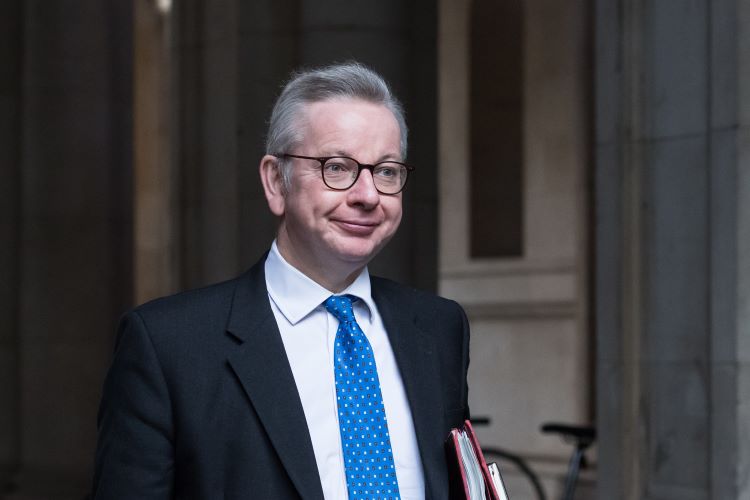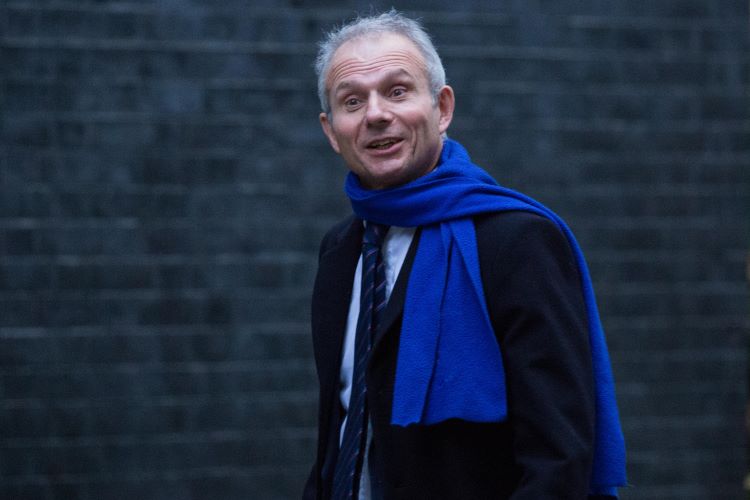How The Cabinet Office Became Boris Johnson's Troubleshooting Empire
4 min read
Almost every major problem faced by UK governments at some point filters through the Cabinet Office.
One government insider said the department had been transformed into an "empire," increasingly tasked with finding solutions for the biggest problems faced by the Prime Minister.
“Essentially, you are standing on the stage spinning plates on top of poles, and every so often the Prime Minister hands you a new plate and says: ‘Keep that one spinning as well, please',” former Conservative MP David Lidington, who headed up the department as the Chancellor of the Duchy of Lancaster (CDL) from 2018-19, told PoliticsHome.
Lidington experienced first hand the expansion of the Cabinet Office's remit under former-Prime Minister Theresa May's government, when more and more jobs were added to his ministerial in-tray.
"There is a risk that you get handed one too many plates," said the former Cabinet minister.
The Cabinet Office sits at the very centre of government, supporting the Prime Minister and coordinating work across different departments, as well as managing disputes between Secretaries of State. There is a door linking the department, which is found at 70 Whitehall, with 10 Downing Street. Access to this little-known route is highly coveted.
The department has constantly changed and evolved throughout its 100-year-plus history.
In 2001, the then-Prime Minister Tony Blair set up a unit within the Cabinet Office that was charged with delivering his government's most high-profile policies. In more recent years, the department has grown significantly, both in size and responsibility, as it has been asked to come up with fixes for an array of crises and issues demanding urgent government action.
Michael Gove, who served as CDL for over two years between the summers of 2019 and 2021, had the mammoth task of preparing the UK for its departure from the European Union, while also delivering key parts of the UK's Covid response. The current CDL, Stephen Barclay, who replaced Gove in the September reshuffle, has found himself in charge of a fiendishly eclectic brief that currently includes supply chain disruption, Channel crossings, and the Afghan resettlement scheme.
The current CDL, Stephen Barclay, who replaced Gove in the September reshuffle, has found himself in charge of a fiendishly eclectic brief that currently includes supply chain disruption, Channel crossings, and the Afghan resettlement scheme.
The CDL's job of "troubleshooting" on the behalf of the Prime Minister has grown significantly under the current government, according to one senior official, who described the modern-day Cabinet Office as "one of the most powerful departments in Whitehall".
“Gove was very much the Brexit and Covid fixer across government, but the current CDL has even more responsibility and deals with even more problems," they told PoliticsHome.
Alex Thomas, a Programme Director at the Institute For Government think tank (IfG) who used to work in the Cabinet Office, said the expansion of the department's responsibilities was not just a reflection of the many major challenges faced by the government in recent years, Brexit and the pandemic to name just two, but also a symptom of Johnson's style of leadership.
Johnson is a Prime Minister who likes to delegate tasks to trusted people, he said, which is a big reason why the Cabinet Office has taken on so many additional responsibilities in 2021.
“Some Prime Ministers, particularly this one, find it useful to have under their control a minister sitting at the centre of government, who can bang heads together across departments," he said.
"If the PM is not across the detail of a particular policy, he can delegate to someone who is." Barclay, the Conservative MP for North East Cambridgeshire, who previously served as Brexit Secretary, is thought to have a close relationship with the Prime Minister.
Barclay, the Conservative MP for North East Cambridgeshire, who previously served as Brexit Secretary, is thought to have a close relationship with the Prime Minister.
He attends meetings of his closest advisors every morning, which his predecessor Gove did not, and has deputised for Johnson in high-profile House of Commons debates, like for the vote this month on Plan B Covid measures and the recent debate on lobbying and Owen Paterson.
Lidington believes the closeness of the CDL to Number 10, combined with the cross-departmental nature of their role, means they really ought to also be Deputy Prime Minister.
Nowadays the title of Deputy Prime Minister is largely symbolic, and is currently held by Justice Secretary Dominic Raab.
"They should be the number two in government and have a title making that clear," Lidington said.
“They should be someone who the Prime Minister trusts, and who can speak frankly to the PM."
